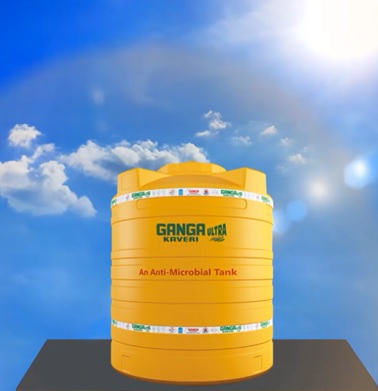
How frequently are water tanks replaced in houses? Not that often, right? Water storage tanks are long term investments, once installed they ideally remain put catering to the water storage needs of the household for decades. Considering this, durability and strong build of the plastic water tank is of primary importance. Subpar quality of plastic tank can be a huge liability both health wise and financially. They are more prone to physical damage that lead to wastage of water, frequent repairs and hindrances in day to day functioning of the household. Moreover, the chemicals used in low grade plastic can be detrimental to the health of the users. To ensure a safe and reliable supply of water in the house, it is important to find the right water tank that is sturdy, safe and long lasting. For this we have to be aware of the key factors that determine the durability of water tanks.
1. What its made of
Water tanks are mostly made of metal or plastic. And among the two, plastic water tanks are more sought after because of the advantages they offer like convenient installation, light weight, durable, affordable and easy maintenance. While it is an established fact that plastics are not the healthiest choice, it does not hold true for all cases. High grade material used in Ganga Kaveri water tank ensures that the water stored remains safe and pure with no contamination from outside or its own components. And when it comes to the durability of a water tank, the material that it is made of is the key determining factor. Plastic water tanks are most commonly made of polyethylene and polypropylene. Polyethylene (PE) is a light, chemical-resistant thermoplastic, that is used in these tanks due to the strength and structural integrity of the material. Top water tank manufacturers also ensure that the tanks do not suffer UV deterioration and use UV stabilized polymers that are sturdy and more durable. Additional tanks like Ganga Kaveri Ultra Ganga Kaveri Ultra come with an anti-Microbial inner layer that safeguard the stored water from harmful bacteria, viruses and other microorganisms. A good-quality tank will provide reliable service for years with the assurance of minimal repairs.
2. Where its put up
The durability of plastic water tanks also depends on where it will be installed. For instance, water storage tanks for home that are installed haphazardly on a hillside are not just a safety hazard but also susceptible to frequent damage. It puts the tank and pipes connected to it under tremendous stress causing cracks, breakages and distortions due to uneven weight distribution. In another case, if overhead water storage tanks are installed in a place that is exposed to direct sunlight for the most part, not only will it suffer from photo-oxidation, but it also increases the probability of algae and other microorganisms thriving inside the tank. If it is not possible to put it under a basement or in a cool place, then it is essential to ensure that the tank does not allow light to pass through it to avoid photosynthesis.

3. What will it be used for
While the singular use of a water tank is to store water, the type of water it holds determines its longevity in the long run. The strength of plastic water tanks remains uncompromised if the water inside it is relatively pure, clean and soft. However, if the quality of water is salty or hard then they tend to be more corrosive in nature, thereby increasing the risk of damage to the material.
If you’re looking to upgrade and are in doubt about the right fit for your needs, these key points will help make your decision easier.


